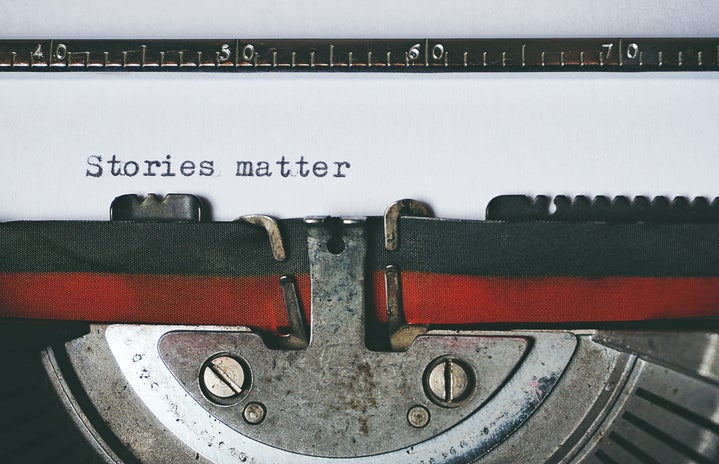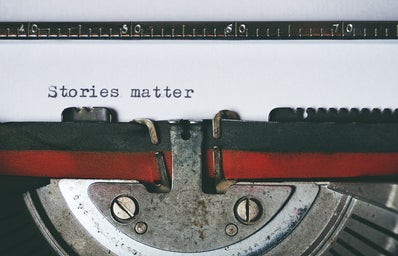If there’s one thing I’m extremely proud of, it’s that I’m a self-published author. My book is honestly like my child. It took me 28 days to write the first draft and two years to edit and publish it. Sounds like a lot. Side note: it was. Now that I’m writing my second full manuscript and already have a full running idea for the third, I have a hang of things. That doesn’t mean the entire process isn’t tedious, but now I’ve learned how fun it can be.
If there’s one thing I’ve learned, it’s that everyone has a story they want to tell. Many people just let the story sit in their minds because they have no clue what to do or how to even begin. I figured I would share my process to help you figure out and start the book-writing process on your own.
1. Keeping A Writer’s Notebook
Your method of keeping a writer’s notebook can be a digital or a physical notebook. I like to use notebooks, specifically from Moleskine, or the more pocket-friendly Exceed brand. My writer’s notebook is where I write down ideas or plan out a full story. I start off by writing down the pending title of the story. Below that, I write a summary or a small description to get the idea on paper. Below that, I write my word count goal and my various writing deadlines for the first draft.
On the next page, I list any characters that I know I will be using. I usually leave a lot of space for this, in case I want to add more. On the next several pages, I like to print out pictures from Pinterest that give me the vibe of the story. It helps me visualize. This can be for the story as a whole, or of each individual character. Whatever you choose, it will help you stay consistent throughout your writing.
Then I decide roughly how many chapters I want. I break the next several pages up into four sections. This is where I write down and key scenes that are important to that scene. Then, depending on how much detail my story entails, I leave several pages blank- one page for each chapter- to create a more-in-depth outline to follow as I write. For the most part, though, I only break it up into sections.
After that, I write down a chapter tracker and word tracker. The chapter tracker includes a numbered list of all of the chapters, along with a place to write the word count and date for when I finish that specific chapter. The word tracker is just a bunch of boxes for every 2,500 words. I mark when I reach that goal to see how long it is until I make my goal word count. For example, I start off with 0 words. In the first box, I write 2,500; in the second box, I write 5,000; in the third box, I write 7,500; and so on.
Finally, the rest of the pages are for scenes you want to write, any extra information you need to scribble down or anything you think is important to your story.
Basically, this entire step is really just documenting what you think you need to write the story.
2. The Writing Process
A lot of people find this part intimidating. Trust me, I did too. It’s difficult to get words onto paper, but once you get your flow, it’ll become easier. There are some tricks to help you get through it.
Suppose you’re writing your chapters in order, but the next chapter or scene isn’t working for you. You just can’t seem to get it onto paper! But, you have an idea for a chapter or scene further into the story from where you are. Write that, and come back later. I’ve learned that you don’t need to go in order. If you have something you need to write, then write it. You can always edit later.
Don’t edit while you’re writing and definitely don’t edit immediately after you finish your work-in-progress. If you edit while writing, you’ll just go back to rewrite constantly, and probably won’t get it done. You can always edit later! The first draft is really about quantity over quality, and quality comes through the editing process. After you’re completely finished with the first draft, spend a couple of days or weeks away from your writing. When you go back to it, you’ll be able to look at it with a fresh pair of eyes.
Set a word goal for every day. Make an effort to write at least, say, 350 words a day. If you stick to that and your word count goal is, hypothetically, 60,000 words, you’ll have your book done in about 172 days! You can make your word goal a bigger or smaller number, just remember to write something every day so you can get it done.
3. Editing
There are several ways you can do this. Hiring an editor is an option, but usually costs a lot of money. You can also always edit your writing yourself. Another option is to edit yourself and ask friends (also known as “Alpha Readers”) to look it over for you.
I usually go with the third option. Remember, your first draft isn’t supposed to be spectacular, no matter how much you want it to be. Editing is probably where most of the tears start falling. You might notice there is a major plot hole or that a character is completely irrelevant, and rewrite. Sometimes you have to completely delete full chapters or add new ones in.
Not to mention, you’ll have at least 3 drafts of this. Trust me, it’s brutal! But it’s definitely worth it in the end.
4. Beta Readers
Beta readers are probably my favorite part. After you’re finished with your final draft, you have to have a couple of people, the beta readers, read it. They provide you feedback from a reader’s point of view. What did they find boring? Exciting? Who was their favorite character? What was their favorite scene? Did they absolutely love to hate a certain character? Did something make them show emotion, meaning did they laugh, did they cry? Getting this feedback is the best because you get a sense of validation for all of your hard work.
5. Publishing
Publishing is probably the most tedious and time-consuming part of this process. First, you want to know if you want to self-publish, traditionally publish, or hybrid publishing.
Self-publishing can go in a couple of different ways: you can get a stock of books for print, which will cost you upfront. Or, you can go through self-publishing services from Amazon or Barnes and Noble.
Traditional publishing is when you go through the long tedious process of querying a literary agent before they accept you and take you through the whole process of getting it to a publisher. I tried this for a year and it got me nowhere. You can also do this after you self-publish, which I recommend because you can build a fanbase through your initial publication.
Hybrid publishing is a mix between the two and could cost a lot of money. Not to mention, you don’t know who is legit. It’s like traditional publishing but you have a lot more control.
It was a long and tedious process, but after I finally self-published my book, I realized it was all worth it. It made me happy to hear back from people who bought it, even if it was only a few who did. If you have an idea and you want to see it in writing, go for it. Only you can write it how you envisioned it. It’s so rewarding in the end.



